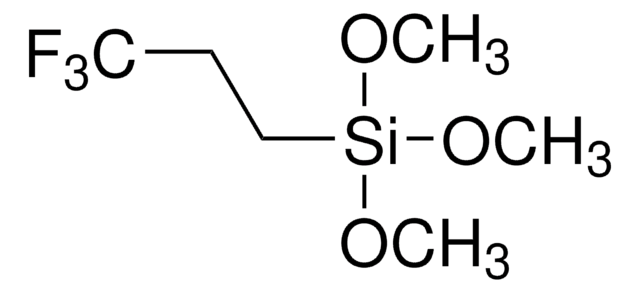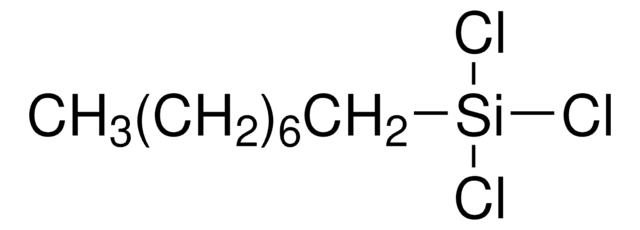667420
1H,1H,2H,2H-Perfluorooctyltriethoxysilane
98%
Synonym(s):
Triethoxy(1H,1H,2H,2H-perfluoro-1-octyl)silane, Triethoxy(3,3,4,4,5,5,6,6,7,7,8,8,8-tridecafluoro-1-octyl)silane
About This Item
Recommended Products
Assay
98%
refractive index
n20/D 1.344
density
1.3299 g/mL at 25 °C
SMILES string
CCO[Si](CCC(F)(F)C(F)(F)C(F)(F)C(F)(F)C(F)(F)C(F)(F)F)(OCC)OCC
InChI
1S/C14H19F13O3Si/c1-4-28-31(29-5-2,30-6-3)8-7-9(15,16)10(17,18)11(19,20)12(21,22)13(23,24)14(25,26)27/h4-8H2,1-3H3
InChI key
AVYKQOAMZCAHRG-UHFFFAOYSA-N
Looking for similar products? Visit Product Comparison Guide
General description
Application
Signal Word
Warning
Hazard Statements
Precautionary Statements
Hazard Classifications
Aquatic Chronic 4 - Eye Irrit. 2 - Skin Irrit. 2 - STOT SE 3
Target Organs
Respiratory system
Storage Class Code
10 - Combustible liquids
WGK
WGK 1
Personal Protective Equipment
Choose from one of the most recent versions:
Already Own This Product?
Find documentation for the products that you have recently purchased in the Document Library.
Customers Also Viewed
Articles
Inorganic nanomaterials are tunable by size, shape, structure, and/or composition. Advances in the synthesis of well-defined nanomaterials have enabled control over their unique optical, electronic, and chemical properties stimulating tremendous interest across a wide range of disciplines. This article illuminates some of the recent research advances of inorganic nanoparticles (NPs) in optoelectronics applications.
Our team of scientists has experience in all areas of research including Life Science, Material Science, Chemical Synthesis, Chromatography, Analytical and many others.
Contact Technical Service











